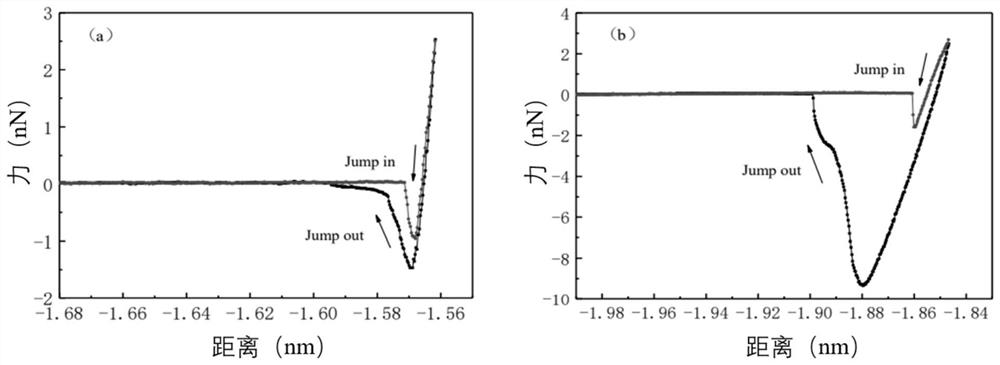Method for immobilizing enzyme by using polydopamine-coated plastic filler
A technology of polydopamine and immobilized enzymes, applied in the direction of immobilized enzymes, biochemical equipment and methods, enzymes, etc., can solve the problems of substrates with specific requirements, short-term effects, difficult coating adhesion, etc., and increase the microscopic surface area , increase the fixed point, the effect of enhanced adhesion
- Summary
- Abstract
- Description
- Claims
- Application Information
AI Technical Summary
Problems solved by technology
Method used
Image
Examples
Embodiment 1
[0038] Take 12.114 g of tris (Tris) in a 1 L volumetric flask, add deionized water to obtain a 0.1 M Tris buffer solution, and add hydrochloric acid to adjust the pH to 8.5. Dissolve 2 g of dopamine in Tris buffer solution to obtain a fresh dopamine solution with a concentration of 2.0 mg / mL. Put the polypropylene filler into the isopropanol solution, ultrasonically wash it for 30 minutes, and then ultrasonically clean it with distilled water for 15 minutes to remove the grease and dust on the surface, take it out and put it in a vacuum drying oven at 50°C. Immerse the cleaned and dried polypropylene packing in the dopamine solution, react continuously in a water bath constant temperature shaker at room temperature for 1.5h, take out the packing, wash thoroughly with ethanol and deionized water in turn until the filtrate is colorless and transparent, put it in 60℃ Dry overnight in a vacuum oven to obtain a dopamine-modified polypropylene filler.
[0039] Weigh 0.548 g of meth...
Embodiment 2
[0047] Other steps are the same as in Example 1, except that the mass ratio of MTMS to TMOS is replaced by 3:1, and the specific addition amounts are 0.651 g of methyl orthosilicate and 1.953 g of methyl trimethoxysilane.
[0048] The experimental results showed that the protein immobilization rate was 89.62±2.4%; the adhesive strength was 55.734MPa; after incubation in pH 10.0 for 12h, the relative enzyme activity was 80%; after incubation in the organic solvent ethyl acetate for 20h, the relative enzyme activity was 89%; 88% relative activity after storage for 60 days
[0049] It can be seen from the experimental results that the protein immobilization rate and adhesive strength do not change much after the ratio of silane precursor is changed, because the protein immobilization rate and adhesive strength mainly depend on the dopamine coating on the surface of the filler. The relative enzyme activity is slightly reduced, because the lipase CaLB is an interface active enzyme,...
Embodiment 3
[0051] Other steps are the same as in Example 1, except that the amount of methanol added is replaced by 60% of the total mass of liquid A, and the specific amount added is 3.65 g.
[0052] The experimental results showed that the protein immobilization rate was 88.42±2.6%; the adhesive strength was 56.762MPa; after incubation in pH 10.0 for 12 hours, the relative enzyme activity was 78%; after incubation in the organic solvent ethyl acetate for 20 hours, the relative enzyme activity was 89%; the relative enzyme activity was 79% after storage for 60 days.
[0053] From the experimental results, it can be seen that the enzyme activity decreased significantly. This is because methanol acts as a dispersant in the formula, allowing the enzyme to disperse evenly, but methanol damages the activity of the enzyme and reduces the activity of the enzyme, so the relative activity decreases significantly.
PUM
| Property | Measurement | Unit |
|---|---|---|
| concentration | aaaaa | aaaaa |
| surface roughness | aaaaa | aaaaa |
| concentration | aaaaa | aaaaa |
Abstract
Description
Claims
Application Information
 Login to View More
Login to View More - R&D
- Intellectual Property
- Life Sciences
- Materials
- Tech Scout
- Unparalleled Data Quality
- Higher Quality Content
- 60% Fewer Hallucinations
Browse by: Latest US Patents, China's latest patents, Technical Efficacy Thesaurus, Application Domain, Technology Topic, Popular Technical Reports.
© 2025 PatSnap. All rights reserved.Legal|Privacy policy|Modern Slavery Act Transparency Statement|Sitemap|About US| Contact US: help@patsnap.com



